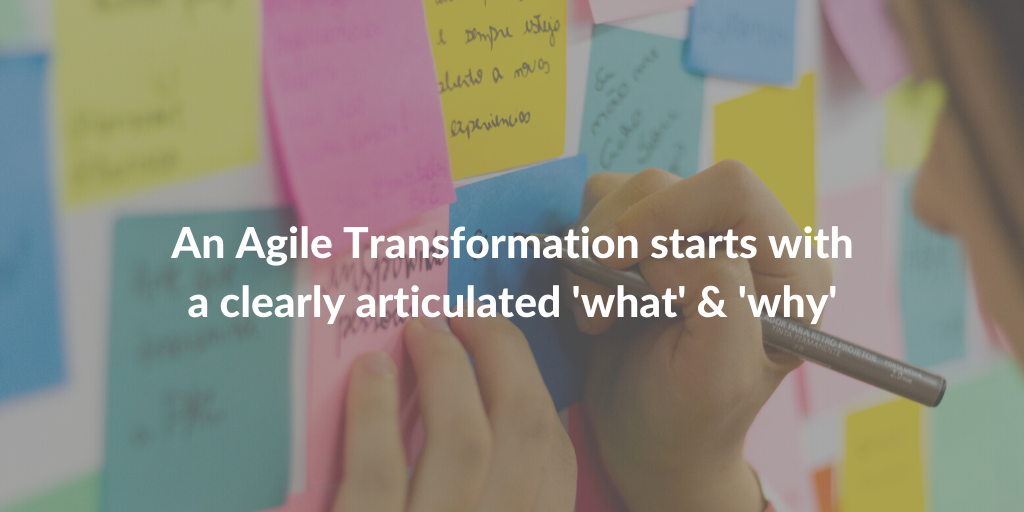Categories
Tags
Newsletter
Subscribe to the QRP International neswletter and get all the news on trends, useful contents and invitations to our upcoming events
Subscribe
Agile has become mainstream on a global level and across all industries. Although it started in IT development, Agile is now being used far outside the initial scope. Today we can talk about Agile companies, as the Agile mindset has entered all enterprise layers. Some companies are leading the way for many years now but even more are currently going through or embarking on the Agile transformation.
As these Agile transformations also mean massive investment, it is good to understand why organizations decide to invest. And next to ‘why’, the first fundamental question is: what is Agile? Agile has many meanings, and if you would ask ten professionals, you would probably get ten different answers. On top of that, there is the Agile lingo and a myriad of Agile frameworks out there, which is only adding to the confusion that some people and companies experience.
Agile is a broad concept, which can make it challenging to identify and understand the real meaning of Agile. Agile is best described by a number of definitions. The different definitions show different perspectives on what Agile is, and each of them answers the question partially.
The dictionary definition;
A lookup in the dictionary will give you: “the ability to move quickly and easily.” On an enterprise level, this is reflected by being able to change direction if the set destination suddenly changes. The level of agility is currently being tested by a terrible global virus attack. It is forcing organizations to change and adapt quickly. We see that Agile companies are clearly taking a head position.
The Agile Manifesto;
The Agile Manifesto, published in 2001, the kickstart (or acceleration) for a number of Agile frameworks to evolve and become more popular. The Agile Manifesto contains 4 values and 12 principles. The values are key and are defined as follows;
According to the Agile Manifesto, being Agile means respecting the values and following the 12 principles. Easier said than done, as many companies have embedded blocking factors to an Agile way of working as part of how they do things. Meaning that even when you are very motivated as an individual to work in an Agile way, you cannot remove company constraints and culture barriers by yourself.
Faster decisions;
A mindset based on the Agile Manifesto, not well known but very essential. This mindset enables faster and better decision making. Speed on the decision side means a better flow of activities, which means faster delivery of business value. Ultimately that is what agile is all about.
In business, you need to make decisions based on incomplete information. Waiting until we have 90% of the info probably means waiting too long. Being able to decide with for instance 70% of the info, will improve cycle times of operations and projects. And even if this might increase the amount of errors, the Agile mindset will enable smoother corrections in case of wrong decisions.
Agile as an umbrella term;
Agile is NOT a framework or methodology but instead an umbrella for a wide range of frameworks. All of these frameworks have their origin and scope and are based on the same values and principles. The frameworks are all different. Organizations can adapt a framework based on their unique context and needs. One of the key questions to be answered in an early phase is: what framework or combination of frameworks is best suited for our company? Curious to know more about this, we will zoom in into this question in the webinar on the 19th of May.*
Once we have a better idea what Agile is about, we can ask ourselves why companies embark massively on the Agile transformation. Agile is everywhere and is difficult to find an executive that does not claim his/her organization should become more Agile. However what this exactly means, is not always crystal clear. At the same time, when asking employees why the company wants to become (more) agile, the answer sometimes indicates there is no real strategy behind the agile transformation, or at least not fully communicated.
The ‘why’ should, in my opinion, always be linked to increased business value. More business value can mean many things and is often related to one or a combination of the following items:
The answer to the question ‘why’ should be clear and consistent throughout the enterprise from the floor to executive level. Proper change management helps a lot for realizing a successful Agile transformation, and this always starts with a clearly articulated ‘what’ and ‘why’.
Once you start your Agile transformation, how do you prove it is contributing to for instance higher customer satisfaction and revenue as other factors will also influence these? And how do you ensure your Agile transformation benefits outweigh the cost without going too fast or too slow? Both are key questions for a successful transformation.
But, as in all transformations, going step by step remains key: understanding the ‘what’ and ‘why’, building skills & expertise, visiting other companies to see & learn, defining the transformation approach and choosing the right framework are part of the first big step. And don’t forget an experienced coach who has learned from making mistakes and taking wrong decisions!
*To watch the recording of the FREE webinar ‘Agile Frameworks; what works for you?’ please click here.